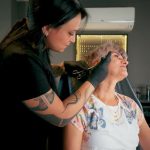Is Red Light Therapy Right for You? A Comprehensive Overview

Red light therapy, also known as low-level laser therapy (LLLT) or photobiomodulation, is a non-invasive treatment that uses red and near-infrared light to stimulate healing and reduce pain. This type of therapy has been used for decades in medical settings to treat a variety of conditions, including chronic pain, acne, and even hair loss.
But is red light therapy right for you? In this comprehensive overview, we will delve into the science behind red light therapy, its potential benefits, and who may benefit most from this innovative treatment.
Firstly, let’s discuss how red light therapy works. When exposed to specific wavelengths of red and near-infrared light, cells in the body are stimulated to produce more energy in the form of adenosine triphosphate (ATP). This increase in energy production can help improve cellular function and promote healing processes within the body.
One of the main benefits of red light therapy is its ability to reduce inflammation and pain. By stimulating cellular repair mechanisms, red light therapy can help alleviate symptoms associated with conditions such as arthritis, fibromyalgia, and sports injuries. Additionally, this type of treatment has been shown to improve circulation and promote tissue regeneration.
In addition to reducing pain and inflammation, red light therapy has also been found to have positive effects on skin health. Studies have shown that exposure to red and near-infrared light can help improve collagen production, reduce wrinkles and fine lines, and even treat acne. This makes it an attractive option for individuals looking to improve their skin’s appearance without invasive procedures or harsh chemicals.
Furthermore, research suggests that red light therapy for good skin those experiencing hair loss or thinning. By stimulating hair follicles at the cellular level, red light therapy can promote hair growth and improve overall scalp health. This makes it a promising option for individuals seeking natural solutions for hair restoration.
While red light therapy offers many potential benefits across various health concerns, it is essential to note that results may vary depending on individual circumstances. Factors such as age, overall health status, and underlying medical conditions can all influence the effectiveness of this type of treatment.
In conclusion, red-light therapy holds promise as a safe and effective treatment option for a wide range of conditions. Its ability to stimulate healing, reduce inflammation, and promote overall well-being makes it an appealing choice for those seeking alternative therapies. If you are considering trying red-light therapy, it is essential to consult with a healthcare professional to determine if this treatment is right for you.















